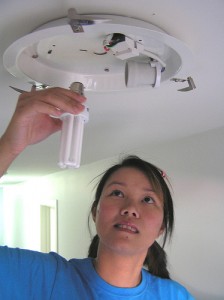
Implementing a plan can save energy and drastically reduce costs and emissions, while creating a culture that fosters continuous improvement in sustainability and building performance. High performance buildings operate efficiently and cost-effectively.
Building technologies are rapidly improving while costs are declining. Your company can reduce energy use and costs without sacrificing comfort and productivity, or spending a great deal of money. Technology is available that can provide comfortable working conditions, the right temperature and humidity, and the right level of lighting in a very efficient and cost-effective way.
There are substantial incentives available on the federal, state and city levels, as well as from utilities, to help businesses make smart investments in energy efficiency. Improvements can include lighting and lighting controls, HVAC upgrades, furnaces, boilers, motors, variable frequency drives and energy efficiency studies.
If the task of implementing an energy plan seems overwhelming, the following steps can help propel you in the right direction:
1 – Make it a commitment
2 – Perform benchmarking
3 – Set goals
4 – Perform retro-commissioning
5 – Perform an energy audit
6 – Determine roles and resources
7 – Raise awareness
8 – Research energy efficiency finance options
9 – Implement energy efficiency processes and install equipment
10 – Measure, monitor and report
11 – Get certified – register for third-party verification (ENERGY STAR, Leadership in Energy and Environmental Design (LEED))
12 – Achieve, recognize, reward!
Guest post by David Pospisil, program manager of Con Edison’s Commercial & Industrial Energy Efficiency Program, New York, N.Y. Visit conEd.com/energysavings for more information.
You should follow us here.





